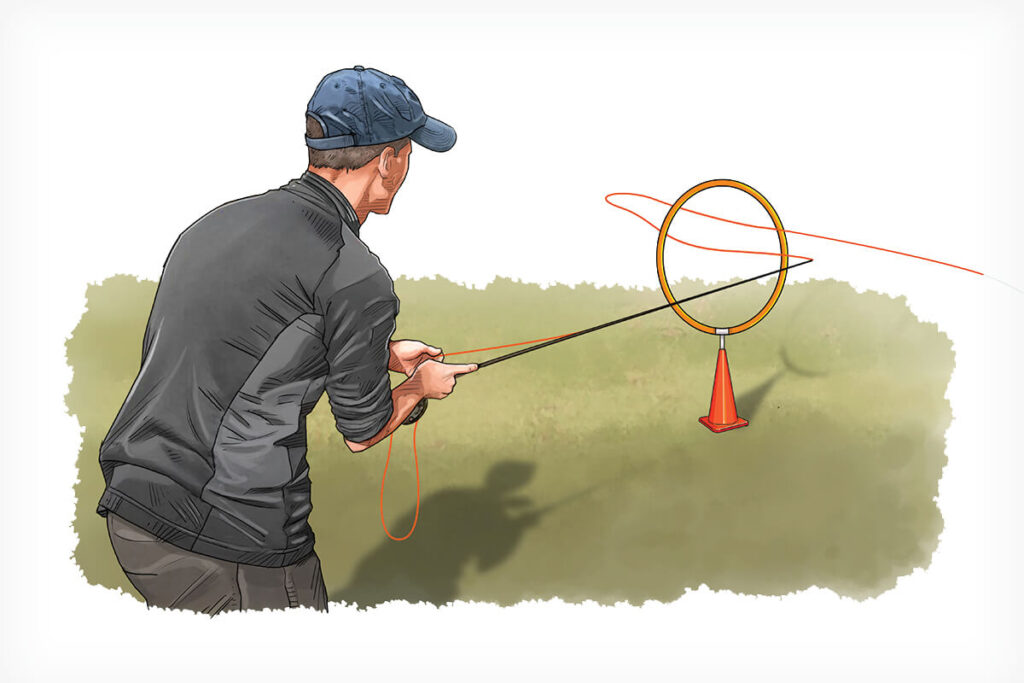How to Cast a Fly Rod: A Comprehensive Guide
Fly casting is an essential skill for any angler looking to master the art of fly fishing. Unlike conventional casting with a spinning or baitcasting reel, fly casting involves using the weight of the fly line to propel the lure forward. Mastering the proper techniques can take time and practice, but the rewards are well worth it. In this comprehensive guide, we’ll cover the fundamentals of fly casting, including the basic cast, roll cast, and double haul. We’ll also provide tips for improving your accuracy and distance, as well as troubleshooting common casting issues. By the end of this article, you’ll have a solid understanding of how to cast a fly rod effectively.
The Basics of Fly Casting
Fly casting relies on the weight of the fly line to propel the lure forward. The line is drawn back, and the rod is accelerated forward, creating a loop in the line. As the loop straightens out, the line and leader extend forward, carrying the fly to the target.The basic fly cast consists of two main parts:
- The Backcast: The rod is drawn back, creating a loop in the line behind you.
- The Forecast: The rod is accelerated forward, straightening out the loop and sending the line and leader forward.
The Basic Cast
- Grip: Hold the rod with your dominant hand above the reel and your non-dominant hand below it, with your thumbs and index fingers forming a “V” shape.
- Backcast: With your arm extended, draw the rod back in a straight line, parallel to the ground. Stop the rod abruptly when it reaches about 1 o’clock. This creates a loop in the line behind you.
- Pause: Allow the line to straighten out behind you before beginning the forward cast.
- Forecast: Accelerate the rod forward in a straight line, parallel to the ground. Stop the rod abruptly when it reaches about 11 o’clock. This creates a loop in the line that extends forward.
- Pause: Allow the line to straighten out in front of you before making another cast.
The Roll Cast
The roll cast is a useful technique for casting in tight spaces or when the line is not fully extended behind you. It’s also an effective way to reposition the line for the next cast.
- Grip: Use the same grip as the basic cast.
- Backcast: With your arm extended, draw the rod back in a straight line, parallel to the ground. Stop the rod abruptly when it reaches about 1 o’clock. This creates a loop in the line behind you.
- Pause: Allow the line to straighten out behind you.
- Forecast: Accelerate the rod forward in a straight line, parallel to the ground. Stop the rod abruptly when it reaches about 11 o’clock. This creates a loop in the line that extends forward.
- Pause: Allow the line to straighten out in front of you before making another cast.
The Double Haul
The double haul is a technique that uses the non-casting hand to pull the line during the backcast and forecast, increasing line speed and improving distance.
- Grip: Use the same grip as the basic cast.
- Backcast: With your arm extended, draw the rod back in a straight line, parallel to the ground. As you draw the rod back, use your non-casting hand to pull the line, creating additional line speed.
- Pause: Allow the line to straighten out behind you.
- Forecast: Accelerate the rod forward in a straight line, parallel to the ground. As you accelerate the rod forward, use your non-casting hand to pull the line, creating additional line speed.
- Pause: Allow the line to straighten out in front of you before making another cast.
Improving Accuracy and Distance
Accuracy and distance are two of the most important aspects of fly casting. Here are some tips to help you improve in both areas:
- Practice: Regular practice is key to improving your casting skills. Set aside time to practice in a park or backyard, focusing on proper technique and form.
- Aim for a Target: Set up a target or marker to aim for, and practice casting to it. This will help you develop better accuracy and control.
- Increase Line Speed: Increasing line speed can help you achieve greater distance. Use a more aggressive casting stroke and a double haul to generate more line speed.
- Adjust Your Casting Arc: Adjusting the angle of your casting arc can also help you achieve greater distance. A wider arc (about 180 degrees) can generate more line speed, while a narrower arc (about 90 degrees) can help you cast in tight spaces.
- Use the Right Equipment: Using the right fly rod, reel, and line can make a big difference in your casting performance. Choose equipment that suits your skill level and the type of fishing you’ll be doing.
Troubleshooting Common Casting Issues
Even experienced anglers can encounter casting issues from time to time. Here are some common problems and how to fix them:
- Tailing Loops: Tailing loops occur when the line forms a loop behind the rod tip during the forward cast. This can be caused by a variety of factors, including improper timing, a sudden stop, or a curved casting stroke.Solution: Focus on keeping your casting stroke straight and parallel to the ground. Avoid sudden stops and make sure to pause briefly between the backcast and forecast.
- Casting Too High: Casting too high can result in a lack of distance and accuracy. This can be caused by an overly aggressive casting stroke or a rod that is too stiff for the line weight.Solution: Use a smoother, more controlled casting stroke and make sure your rod is properly matched to your line weight. If you’re still having trouble, consider using a softer-action rod.
- Casting Too Low: Casting too low can result in the line hitting the water or the ground before reaching the target. This can be caused by a casting stroke that is too low or a rod that is too soft for the line weight.Solution: Use a more elevated casting stroke and make sure your rod is properly matched to your line weight. If you’re still having trouble, consider using a faster-action rod.
- Casting Too Far: Casting too far can result in a lack of control and accuracy. This can be caused by an overly aggressive casting stroke or a rod that is too stiff for the line weight.Solution: Use a smoother, more controlled casting stroke and make sure your rod is properly matched to your line weight. If you’re still having trouble, consider using a softer-action rod.
Summary Table of Casting Techniques
| Technique | Description |
|---|---|
| Basic Cast | The fundamental fly cast, consisting of a backcast and forecast |
| Roll Cast | Useful for casting in tight spaces or when the line is not fully extended behind you |
| Double Haul | Uses the non-casting hand to pull the line during the backcast and forecast, increasing line speed and improving distance |
For more information on fly casting techniques, you can refer to Fly Fishers International.
FAQ Section
1. How long does it take to learn how to cast a fly rod?
The amount of time it takes to learn fly casting varies from person to person, but with regular practice, most anglers can develop a solid casting stroke within a few weeks or months.
2. What is the best way to practice fly casting?
The best way to practice fly casting is to set aside time in a park or backyard with plenty of open space. Focus on proper technique and form, and use a target or marker to aim for.
3. How do I know if my fly rod is properly matched to my line weight?
Most fly rods are designed to work best with a specific line weight. Check the manufacturer’s recommendations or consult with a fly shop to ensure your rod and line are properly matched.
4. What is the most common cause of tailing loops?
Tailing loops are often caused by a curved casting stroke or a sudden stop during the forward cast. Focus on keeping your casting stroke straight and parallel to the ground, and avoid sudden stops.
5. How can I increase my casting distance?
To increase your casting distance, focus on generating more line speed through a more aggressive casting stroke and a double haul. Adjusting your casting arc can also help, with a wider arc generating more line speed.
Conclusion
Fly casting is a skill that takes time and practice to master, but the rewards are well worth it. By understanding the fundamentals of fly casting and practicing regularly, you can develop a smooth, accurate casting stroke that will serve you well on the water. Remember to focus on proper technique, use the right equipment, and don’t be afraid to experiment with different casting styles and techniques. With dedication and persistence, you’ll be casting like a pro in no time.



